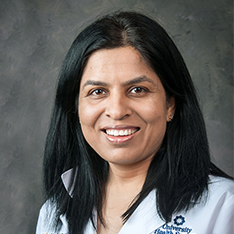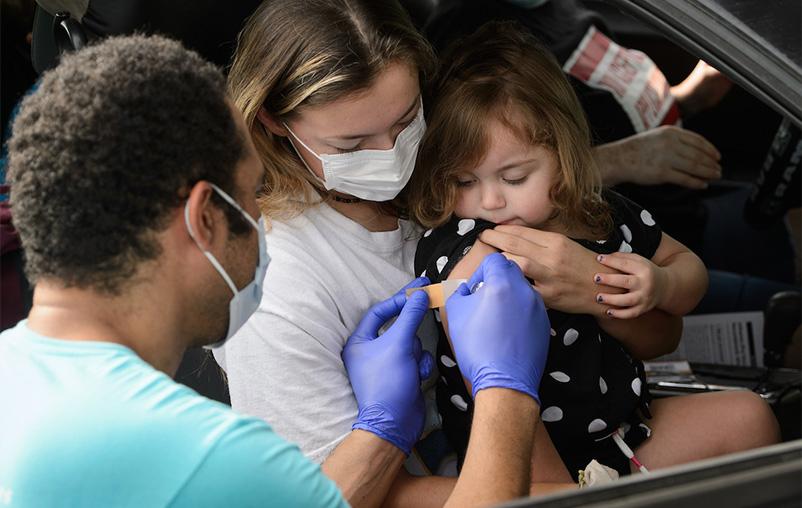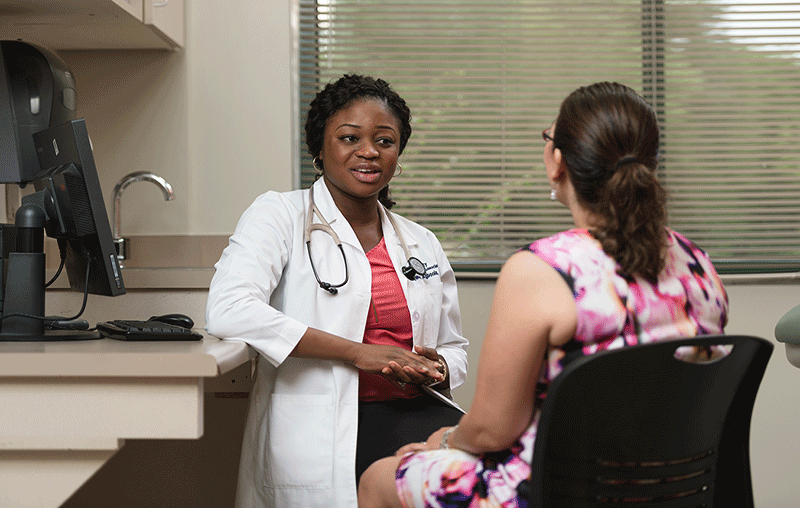Long-COVID patients can take steps to improve their diagnosis and treatment
Two and a half years have passed since we first heard about cases of a deadly virus in Wuhan, China. Since then, COVID-19 has infected almost 90 million Americans. More than a million have died.
Vaccines and antiviral treatments are now preventing many with COVID-19 from becoming hospitalized or seriously ill. However, what’s happening after the infection subsides has created a new class of patients that may be a mystery for some health care providers.
According to the Centers for Disease Control and Prevention, one in five American adults who have had the virus report having symptoms that last three or more months beyond the infection. The patients are sometimes called long haulers and their condition is referred to as long-COVID. Some have become so disabled they cannot work or perform basic daily tasks like shopping, paying bills or preparing meals for their family.
Cynthia Adinig, a long-COVID sufferer from Maryland and a patient advocate, told lawmakers during a recent congressional hearing, she remains chronically ill two years after having the virus: “From time to time now my body becomes overwhelmed with nausea, dizziness, intermittent paralysis, fluctuating oxygen levels, crippling joint pain and unexpected high heart rate,” she testified.
Adinig said health care providers don’t always recognize her ailments as being linked to COVID-19 and dismiss her symptoms without proper treatment. That happened during a recent emergency room visit.
“When I looked over my medical paperwork, I discovered that my main reason for the visit wasn't anywhere to be found. My symptoms of numbness and tingling in my right hand and feet were also never addressed. In spite of having a reaction so severe that my mobility was affected, as is common with long COVID flares, I was left to stiffly hobble out of the hospital,” Adinig said.
Training doctors to recognize long-COVID conditions
At University Health, Dr. Monika Kapur is launching a program to train about 100 primary care doctors and providers to make the connection between COVID-19 and conditions that may emerge because of the virus.
Dr. Kapur says there aren’t enough long-COVID specialty clinics with providers available to help the growing number suffering from lingering illness, so primary care providers have to be on the front lines, armed with information and empathy.
Dr. Kapur says they already treat some of the most common conditions affecting long-COVID patients: breathing difficulty, heart conditions, disorientation, forgetfulness and difficult-to-diagnose disorders like fibromyalgia. It just makes sense for them to acknowledge when the disease might be connected with the virus.
Patients can help providers prescribe effective treatment
As providers gain experience with long-COVID, patients can help them arrive at a proper diagnosis and treatment. The CDC says a good start is to prepare for the doctor appointment:
- Create a written history of your experience with COVID-19 and post-COVID conditions. Include a timeline with dates, symptoms, treatments and test results.
- Bring a list of medications and supplements you are taking to the appointment.
- Document activities that seem to make your illness worse and those that bring relief.
- Prepare a list of written questions, and ask a friend or family member to review them before your appointment.
- Identify next steps in your treatment before leaving your appointment, and ask for a written summary that includes information on medications and your treatment plan.
- The CDC has posted an appointment checklist that will help you prepare.
- Beyond the appointment, keep a journal you can share with your provider that tracks the progression of your illness, symptoms, setbacks and improvements.
- Researchers are still learning what triggers long-COVID illnesses. Some studies have described more than 50 to 100 symptoms.
What researchers have found, according to the CDC, is that individuals who are unvaccinated or have more severe COVID-19 infections, appear most likely to develop long-COVID illnesses.
So, vaccination and the old standbys of handwashing, masking and social distancing can still give you a fighting chance against being infected in the first place.





